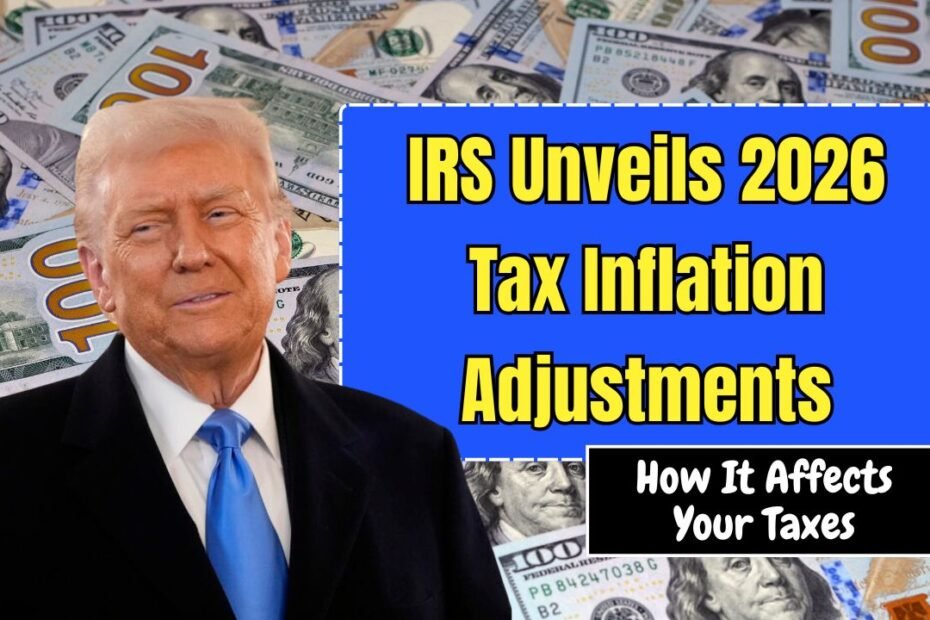The IRS has officially released its 2026 inflation adjustments for more than 60 tax provisions under the new One Big Beautiful Bill (OBBB).
These changes set the framework for federal tax returns filed in 2027, and they aim to shield taxpayers from bracket creep by increasing deductions, exemptions, and income thresholds across the board.
Whether you’re a middle-income earner, a parent, or someone planning your estate, these IRS updates carry meaningful implications.
Major 2026 Adjustments: What the IRS Changed
Below are the IRS’s headline upgrades for 2026 under OBBB:
| Measure | 2026 Amount | What It Means |
|---|---|---|
| Standard Deduction (Married Filing Jointly) | $32,200 | Couples can shield more income from tax |
| Standard Deduction (Single / Married Separately) | $16,100 | More baseline tax relief for individuals |
| Standard Deduction (Head of Household) | $24,150 | Higher deduction for qualifying heads |
| Top Marginal Rate | 37% on incomes > $640,600 (single), > $768,700 (joint) | Maintains top rate, shifts threshold upward |
| AMT Exemption (single) | $90,100 | Fewer taxpayers hit the AMT phaseout |
| Estate Tax Exclusion | $15,000,000 | Larger shield for estates from federal tax |
| EITC (3+ children) | $8,231 | Boosted credit for qualifying families |
These IRS adjustments reflect the annual recalibration meant to prevent inflation from quietly boosting tax burdens.
How the IRS Adjustments Work in Practice
1. Standard Deductions Rise
One of the biggest changes the IRS made is increasing standard deduction levels. By raising those amounts, more of your income becomes non-taxable by default, reducing your taxable base before brackets even apply.
2. Bracket Thresholds Shift Up
The IRS retains the same tax rates (10%, 12%, 22%, 24%, 32%, 35%, 37%) but moves the income breakpoints higher. This means you’ll need more income to cross into higher brackets, limiting tax increases due to inflation.
3. Credits, Exclusions & Other IRS Changes
Beyond deductions and brackets, the IRS also updated:
- AMT (Alternative Minimum Tax) exemptions
- Estate & gift tax exclusions
- Adoption and childcare credits
- Limits on fringe benefits, transportation, FSAs, and MSAs
- Foreign earned income exclusion
Together, these ensure the IRS’s 2026 rules address a wide spectrum of taxpayer scenarios.
Example: What You Might Owe
Imagine a married couple with $150,000 in taxable income:
- Subtract 2026 standard deduction: $32,200 → taxable = $117,800
- Tax calculation:
– 10% on first $24,800
– 12% on income up to ~$100,800
– 22% on remainder
Their effective rate ends lower than if no IRS adjustments existed. The new IRS thresholds and deductions help soften what otherwise might be a heavier tax bite.
With its 2026 adjustments, the IRS delivers tax relief for many Americans by raising deductions, exemptions, and bracket thresholds, largely courtesy of the One Big Beautiful Bill.
While no revolution in taxes, the IRS changes help mitigate inflation’s hidden tax hikes, especially for middle-income earners and families.
To make the most of these updates, review your withholding, revisit your tax strategy, and prepare wisely for the 2027 filing season.
FAQs
Do I need to do anything now after the IRS announced these changes?
No. The IRS’s updated tables and thresholds are automatically applied by tax software, employers, and IRS systems for 2026 returns.
Will the IRS changes make a big difference for high earners?
They help by raising the threshold for the top rate, but high earners may not see as large a drop in effective rate as middle-income filers.
Does the IRS raise all tax benefits equally?
No. Some items (like personal exemptions) remain unchanged. Only provisions indexed under OBBB and law are adjusted by the IRS each year.



